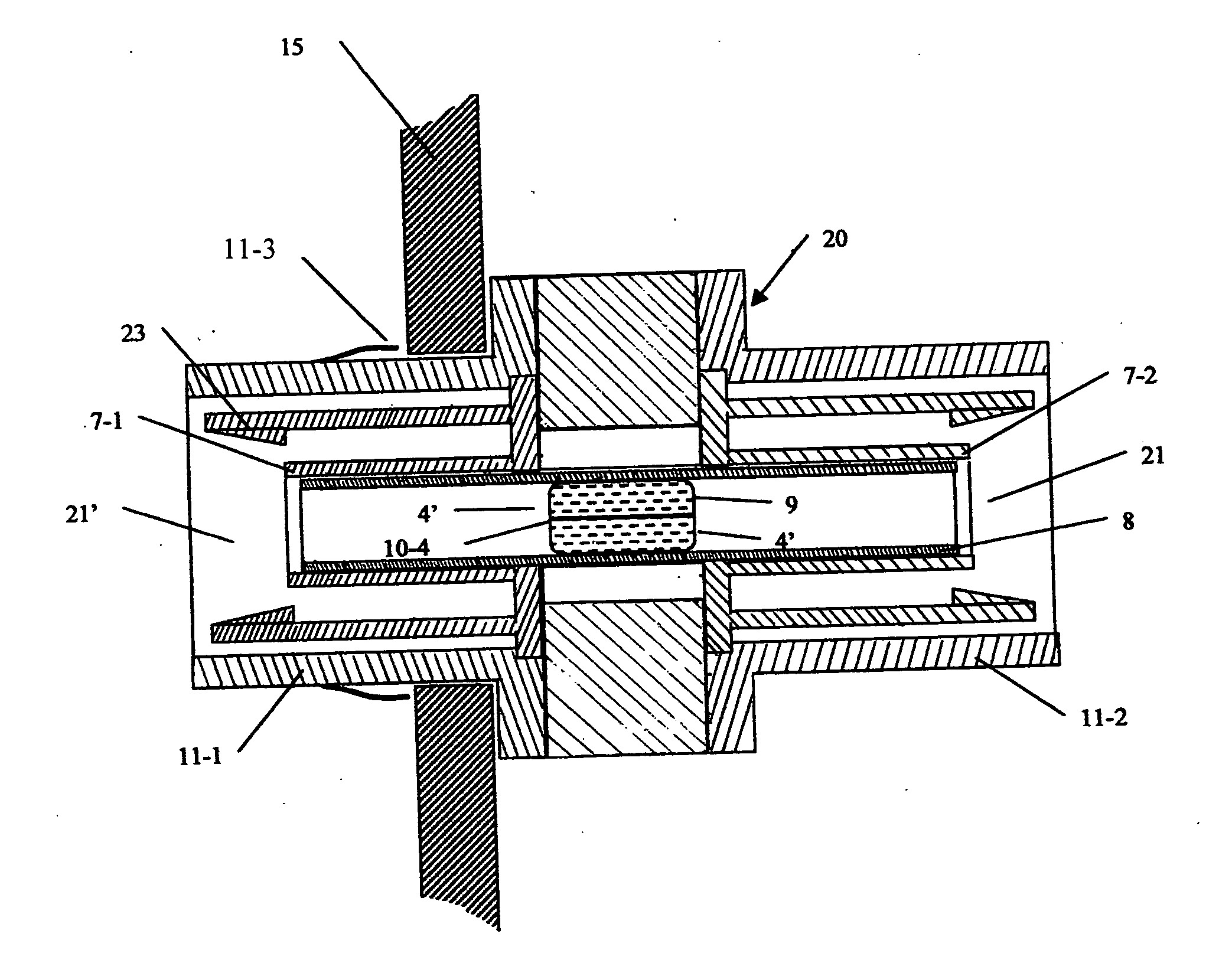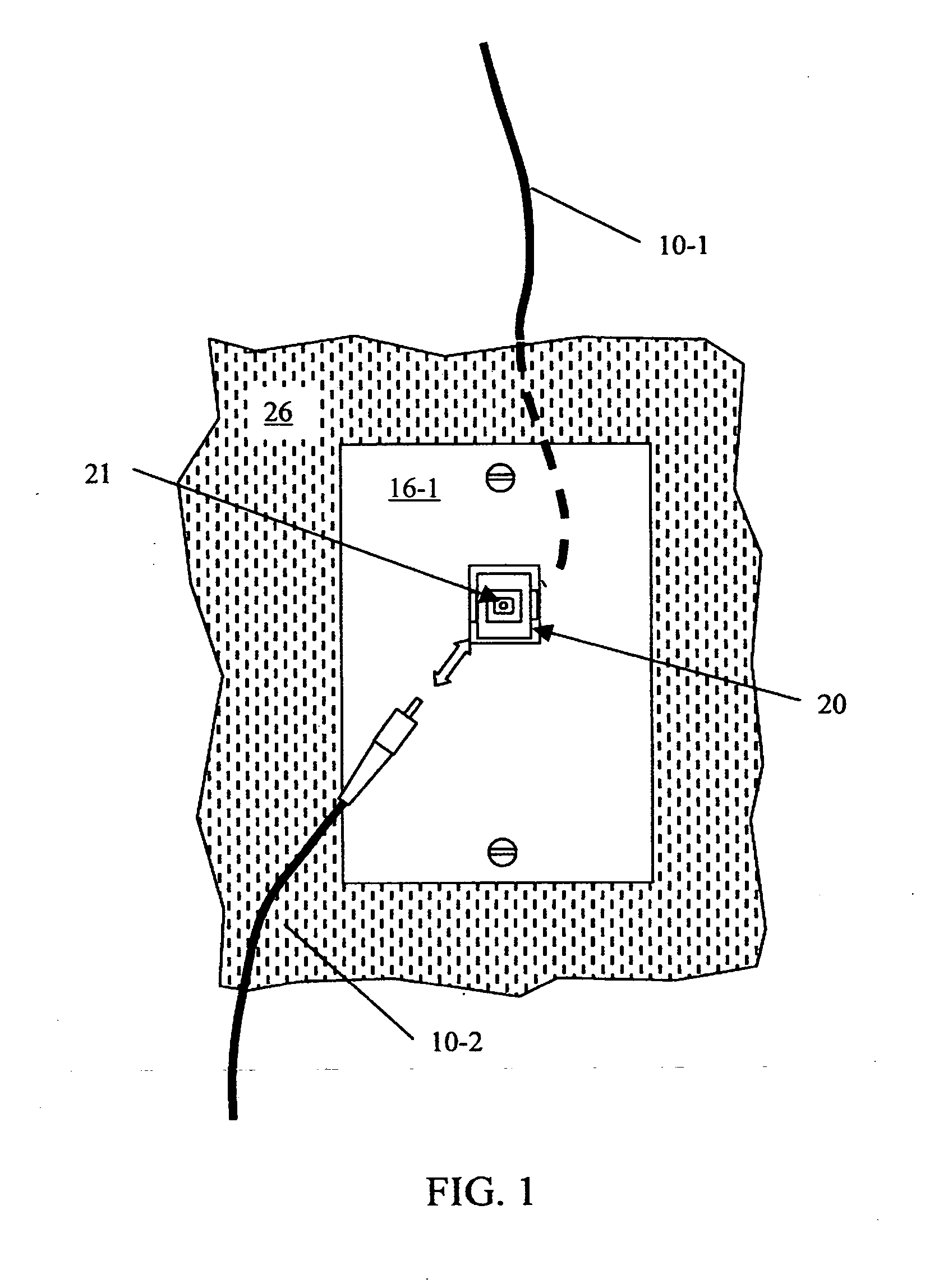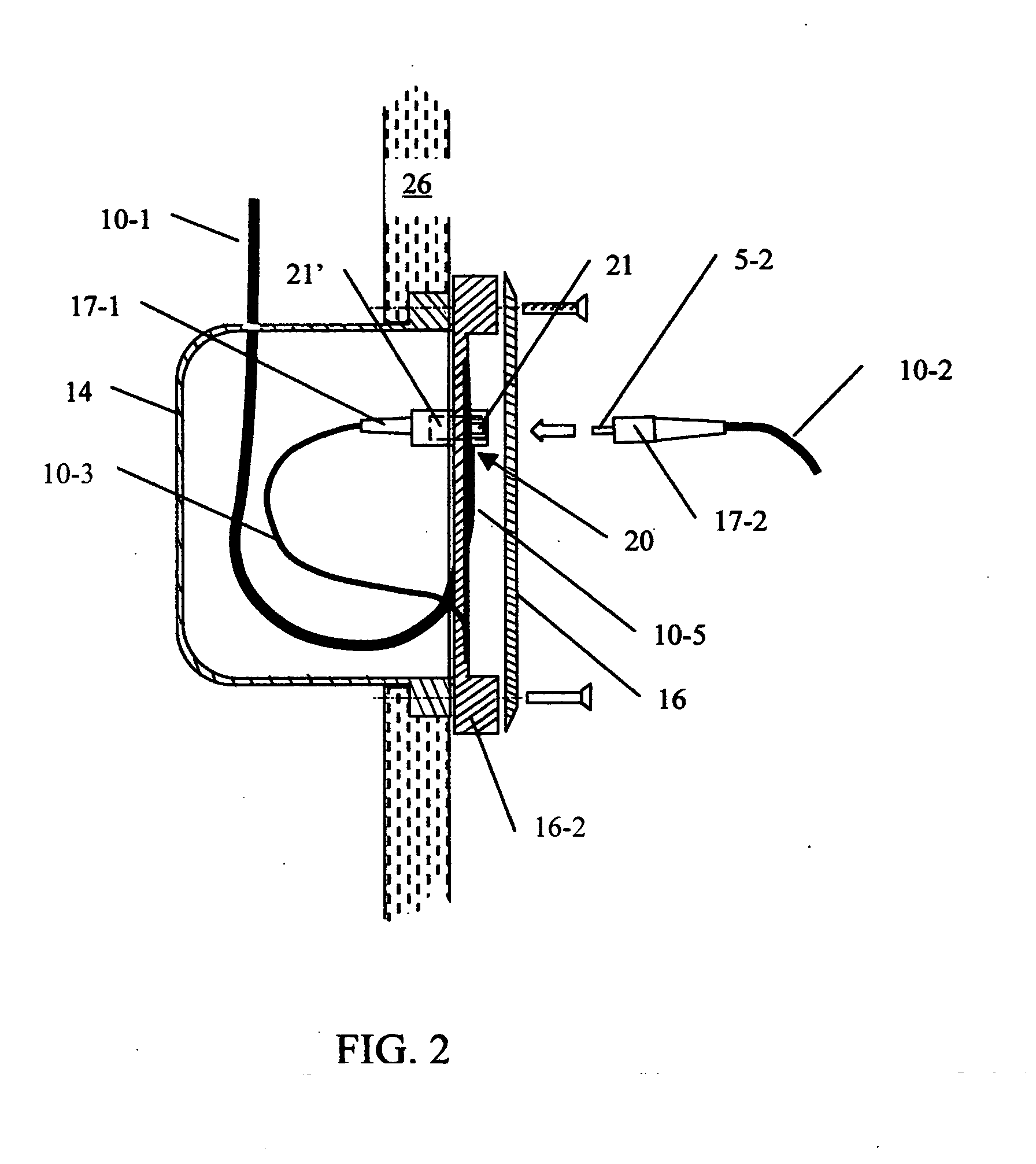Isolated Fiber Optic Union Adapters
a technology of fiber optic cables and adapters, applied in the direction of optics, optical light guides, instruments, etc., can solve the problems of degrading the optical characteristics of the interface, the contact area of ferrules is highly susceptible to scratching, and the degradation of the other fiber terminations, so as to reduce the potential for damage, and the effect of low cos
- Summary
- Abstract
- Description
- Claims
- Application Information
AI Technical Summary
Benefits of technology
Problems solved by technology
Method used
Image
Examples
Embodiment Construction
[0024]FIG. 1 illustrates a front view of an isolated fiberoptic union adapter 20 mounted to a wall plate 16 attached to wall surface 26. The connectorized end of a fiber optic patchcord 10-2 may be inserted into the front receptacle 21 of union adapter 20 to optically interface this patchcord 10-2 to a critical fiber optic drop cable 10-1 located within the plenum of a wall 26. FIG. 2 illustrates a side cutaway view of this same configuration, wherein the critical terminated end 17-1 of fiber 10-1 is inserted into the back receptacle 21′ of adapter 20. During the initial build-out of the fiber optic network, the jacket at the end of drop cable 10-1 is typically stripped to expose tight buffered optical fiber 10-3 of 900 micron diameter. An excess fiber length 10-5 is spooled after the fiber 10-1 is terminated with a polished connector 17-1, by use of a partial spool mandrel formed in the plastic injection molded interface plate 15. This polished connector 17-1 is produced either by ...
PUM
 Login to View More
Login to View More Abstract
Description
Claims
Application Information
 Login to View More
Login to View More - R&D
- Intellectual Property
- Life Sciences
- Materials
- Tech Scout
- Unparalleled Data Quality
- Higher Quality Content
- 60% Fewer Hallucinations
Browse by: Latest US Patents, China's latest patents, Technical Efficacy Thesaurus, Application Domain, Technology Topic, Popular Technical Reports.
© 2025 PatSnap. All rights reserved.Legal|Privacy policy|Modern Slavery Act Transparency Statement|Sitemap|About US| Contact US: help@patsnap.com



